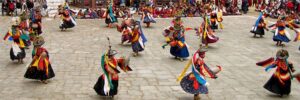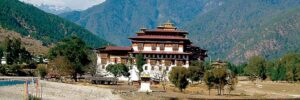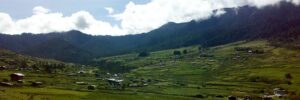
Bumthang Cultural Tour
Trip Duration:
13 DaysTrip Code:
BBCTrip Grade:
ModerateNo. of Pax:
2 - 16From
$ 2765/person
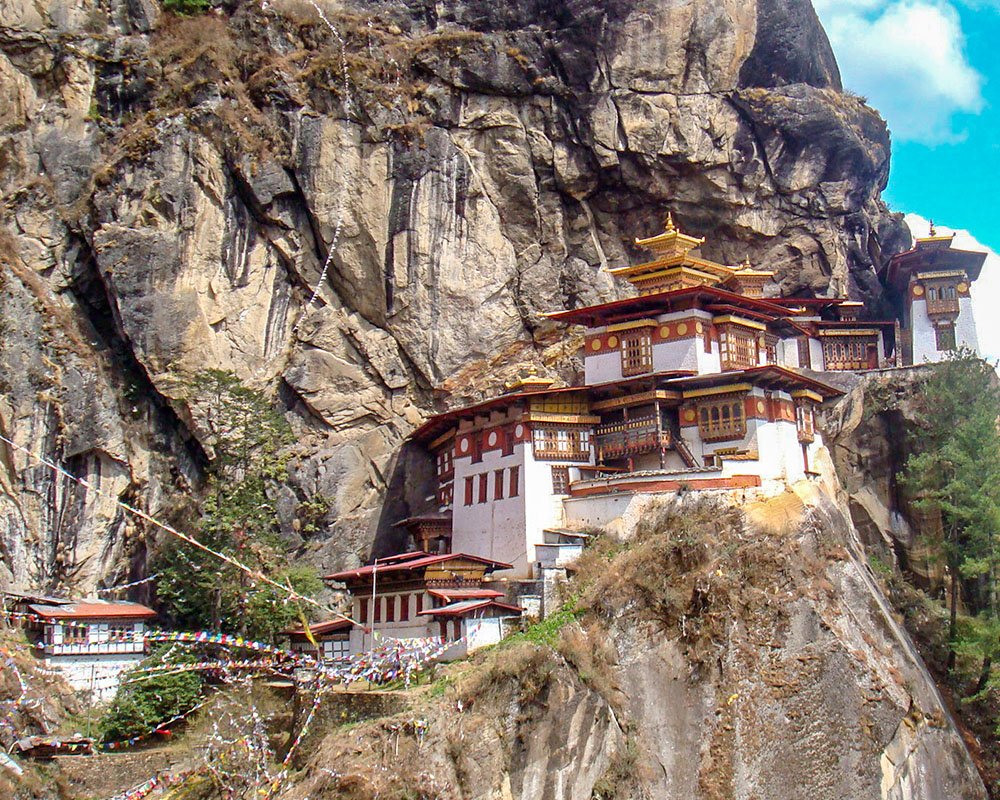
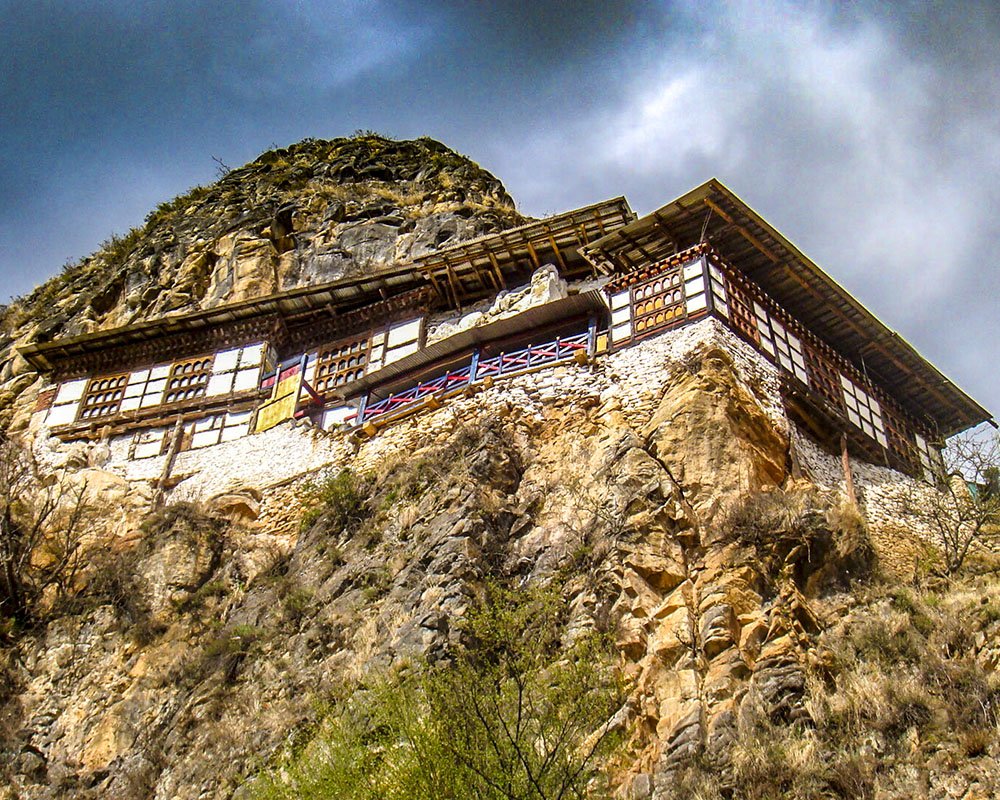
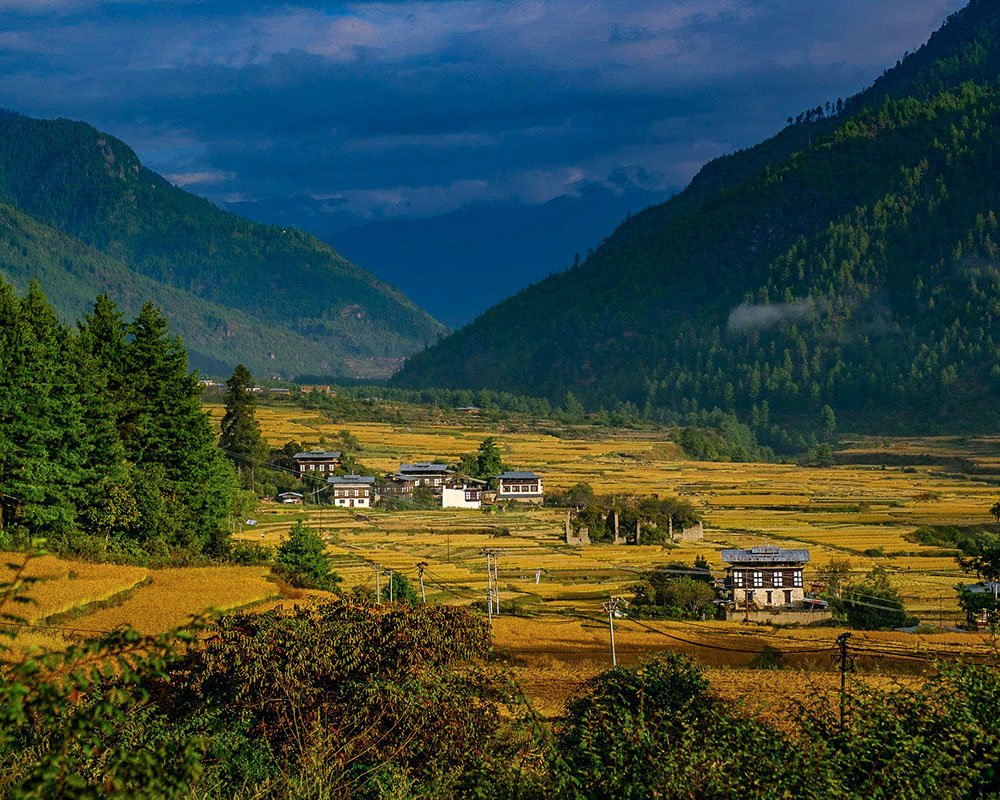
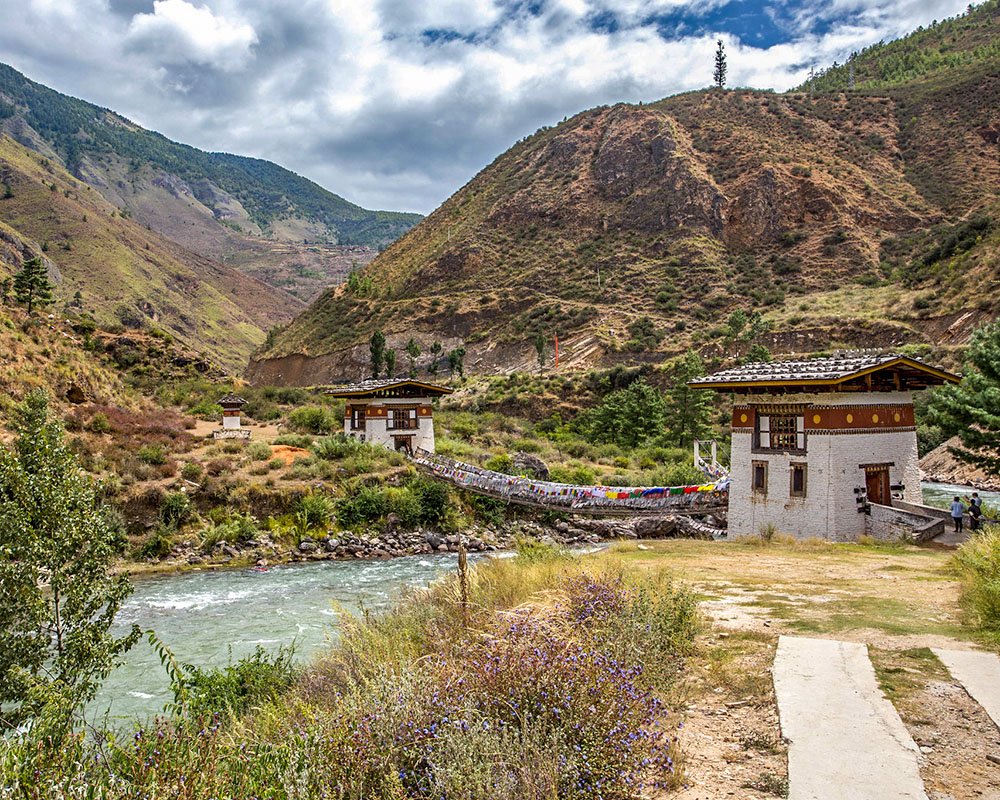
Overview
Bumthang Cultural Tour is a fascinating holiday package is an once-in-a-lifetime travel experience that takes you to one of the most beautiful Himalayan Kingdom in the world- Bhutan.
A vacation that gives you wonderful memories that you will treasure forever, you will be visiting to such scenically and culturally rich locations such as Paro Valley, Thimpu– the country’s capital, Punakha , Wangduephodrang, Gangtey & Tongsa . We have designed the tour itinerary to give you maximum travel pleasure at the best value and this holiday package is an unforgettable adventure in itself.
Itinerary:
This itinerary is a guideline pattern which we offer for Trek of this type. But, unforeseen events such as mountain weather, local politics, transportation etc, is beyond Trek Himalayan’s control could be resulted in a change of program. It is very unlikely to have such circumstances occurs but our effort is to minimize its effect, however Trek Himalayan is not responsible for the result of delays or changes in our tour itinerary.
Arrive at the (TIA) Tribhuwan International Airport where you will be welcomed by Trek Himalayan representative and transferred to your hotel. The rest of the afternoon is free until evening when you’ll enjoy a welcome drinks with your guide and introduce each other. Overnight in Kathmandu
After breakfast sightseeing tour begins which include all the religious, cultural & historical sites within the Kathmandu valley. Overnight in hotel
Pashupatinath (World Heritage Site):
One of the holiest Hindu shrines in the world, the temple of Pashupatinath is the focus of pilgrims from all over from Nepal and India. The temple is dedicated to Lord Shiva and built in the familiar pagoda Style. Chronicles indicate the temple’s existence prior to 400 A.D. It lies 5 kms east of the city centre. This holy place is picturesque collection of temples and shrines. All the dying persons are brought to Pashupatinath for cremation. Only the Hindus are allowed to go inside the temple.Bouddhanath (World Heritage Site):
It is the world’s biggest stupa located about two km to the north of Pashupatinath temple. This colossal stupa is known by the name of Bouddhanath, the god of wisdom. It is difficult to assign a period to it as some believe that it was built during the reign of either Shiva Deva or Anshu Verma in the 17th century A.D. The design is much like the Swoyambhu stupa, except that the final consists of receding squares instead of circles. Bouddhanath attracts Buddhist pilgrims from all over the world.Swoyambhunath, Monkey Temple (World heritage Site):
The Swoyambhunath Stupa crowns a hillock to the west of Kathmandu. A massive white dome surrounded by a 13 stage spire, is one of the most sacred Buddhist sites in Nepal. It is said to be 2000 years old. Its origins are linked to the founding of the Kathmandu Valley by draining the water of the lake by Bouddhisattva Manjushree. Swoyambhunath manifested in the lake as a brilliant light emanating from a lotus, Manjushree let the water out of the valley paying homage to Swoyambhu, thus making the valley inhabitable.Kathmandu Durbar Square (World Heritage Site):
It is the nine-storied palace structure built around 1770 AD. This palace square was a residence to Nepal’s royal family. The house of the living goddess (Kumari), the ferocious Kal Bhairav, the red Monkey God and hundreds of erotic carvings are a few examples of the sights at the square. All woodcarvings,
statues and architectures in this area are exceptionally fine. Most parts of the palace premises are open for tourists thoughout the week during office hours.After breakfast in hotel you will be transferred to Tribhuvan International Airport for the flight to Paro. After completing the visa formalities at the Paro airport you will be received by our Bhutan’s representative and transferred to the hotel. While driving through the picturesque Paro valley with its quaint clusters of hamlets amid terraced paddy fields you will see the sight of white-domed peak of the sacred Mt. Jhomolhari that looms overhead. The rest of the day is at leisure to explore the town of Paro and its markets. Dinner and overnight in hotel
After breakfast we will drive to Drugyel dzong, the ruined Fort (destroyed by fire in 1950.). From here we can have the view of sacred Mt. Chomolhari on clear days. After lunch we drive to Ta Dzong former Watch Tower which now houses the National Museum and then walk down passing close by the Paro Dzong, crossing the Bhutanese typical wooden roofed bridge to Paro. After a short stroll in town we drive back to hotel for overnight dinner and stay.
This morning we drive through the winding road beside the Paro Chu (Chu means river or water) downstream to its confluence with the Wang-Chu then up the valley to Thimphu capital. After lunch we stroll around the major cultural sites around Thimphu . Dinner and overnight in hotel
After breakfast we will drive for sightseeing tour of the Thimphu valley that includes the Nunnery, National Library, Painting School and Handicraft Emporium and then drive back for lunch. After lunch we continue our sightseeing tour of Memorial Chorten (Stupa) of His Late Majesty the 3rd King of Bhutan. We will visit Simthokha Dzong, the first fort built by Shabdrung who unified the kingdom in the 17th century, now it houses the school for study of National Language – Dzongkha. Dinner and overnight in hotel
After breakfast we will drive to Punakha across Dochula pass (3,080m).Upon arrival we visit Punakha Dzong, built strategically at the junction of Pho Chhu and Mo Chhu rivers in 1637 by Shabdrung Ngawang Namgyal to serve as the religious and administrative centre of the region, Punakha Dzong has played an important role in Bhutan’s history. Damaged by four catastrophic fires and an earthquake, the Dzong has now been fully restored. After lunch we will continue our overland journey to Wangduephodrang visiting Dzong and local market. The district of Wangdiphodrang is also famous for its bamboo products, slate and stone carvings. Dinner and overnight in hotel
After breakfast we will drive to Gangtey through dense forests and oak, rhododendron tress, reaching at Gangtey (Phobjikha).Here we will visit Gangtey village and Gangtey Gompa, the only Nyingmapa monastery. After lunch we will continue our journey to Tongsa crossing 3,300m high Pele La pass. In Tongsa we will visit Dzong from outside and also visit the Ta-Dzong and stroll in Tongsa market. Dinner and overnight in hotel
After breakfast we will drive to Bumthang . Here we will visit the Jambey Lhakhang, Tamshing Monastery, Jakar Dzong and Swiss Farm House, Swiss cheese factory and apple juice factory. Kurje Lhakhang is a temple where saint Padmasambhava subdued a local demon and left his body imprint on a rock. Tales of the great teacher Guru Padmasambhava dominates this sacred Bumthang valley. Dinner and overnight in hotel
Leaving Bumthang, we head west, stopping to visit the Chendebji Chorten, a large white monument said to conceal the remnants of an evil spirit vanquished here. Continuing across the spectacular Pelela pass (3300m), we descend into the valleys of Punakha and Wangdi. Further driving through blossoming hills and pine forests, we arrive at Dochula pass (3100m) for another opportunity to have a panoramic view of the eastern Himalayan range, including Bhutan’s highest peak, Gangkar Phuensum. Finally we reach at Paro. Overnight at Hotel in Paro
After the spectacular flight back to Kathmandu the rest of the day you are free to relax in Kathmandu or to go shopping.
You can do the last minute shopping or go out for Spa and Massage Parlor.
Transfer To The Airport For Final Departure
Trip Map:
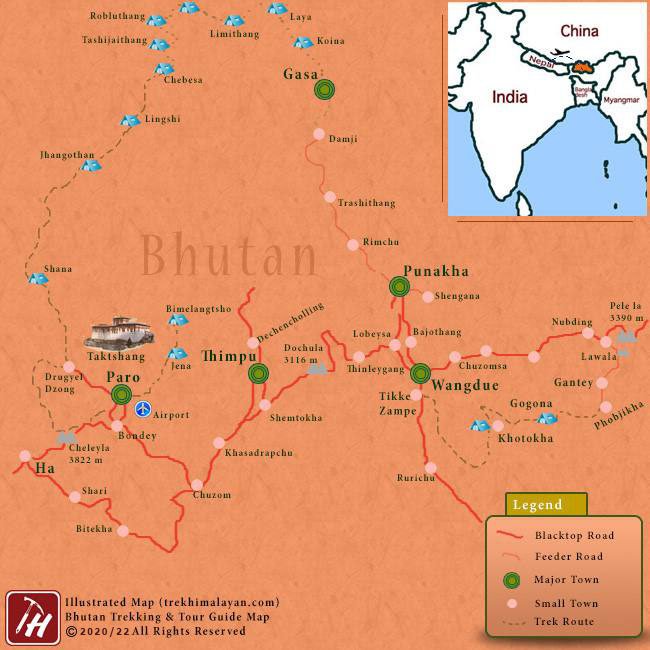
What is included
What is Excluded
Bumthang Cultural Tour 2024/2025 Cost and Departure Dates
Trip Code
Arrival Date
Departure Date
Status
Price
Nitty Gritty
General Information
Nepal
Nepal is a small landlocked country of highly diverse and rich geography, culture, and religions. The mountainous north has eight of the world’s ten highest mountains, including Mount Everest. It contains over 240 peaks more than 20,000 ft (6,096 m) above sea level. The fertile and humid south is heavily urbanized. By some measures, it is a land of different arts and indigenous cultures well preserved since time immemorial. Hindu and Buddhist shrines found in the country are enriched with wood carving and bronzes, century’s old statues standing along the wayside and three popular historic cities – Kathmandu, Bhaktapur, Patan have preserved their medieval splendor and architectural flavor till date.Geography
Nepal is located in South Asia between China in the north and India in the south, east and west. While the total land area is 147,181 sq. km including water area of the country that is 3,830 sq. km. The geographical coordinates are 28°00′N 84°00′E. Nepal falls in the temperate zone north of the Tropic of Cancer. Nepal’s ecological zones run east to west about 800 km along its Himalayan axis, 150 to 250 km north to south, and are vertically intersected by the river systems. The country can be divided into three main geographical regions: Himalayan region, mid hill region and Terai region. The highest point in the country is Mt. Everest (8,848 m) while the lowest point is in the Terai plains of Kechana Kalan in Jhapa (60 m). (Source NTB)Nepal Visa
All visitors except the Indian nationals must hold passport and valid visa. Visa can be obtained at the Nepalese diplomatic missions and consulates abroad. Visa is also issued at the entry points. It can be extended at the Department of Immigration in Kathmandu. Children under 10 years need not pay any visa fee. People willing to get entry Visa at the airport or any of the land entry points are required to fill a visa form with passport photograph.
* Tourist visa can be extended for a maximum period of 150 days in a single visa year (January – December).Government Office Hours & Holidays
Sunday to Thursday: 1000hrs – 1700hrs (during summer)
Sunday to Thursday: 1000hrs – 1600hrs (during winter)
Friday: 1000hrs – 1500hrs.
Saturday: Holiday
You can find list of other national holidays in Nepal hereLanguage
Nepali, written in the Devanagari script, is the official language of Nepal. However, most people living in the city areas can understand and speak English fluently. Hindi language is widely understood across the country.About Bhutan
Druk Yul, land of the Thunder Dragon, as Bhutan is known, is regarded as the last paradise on earth. The kingdom is flanked on the north and north-west by Tibet, the plains of north-east India to the south and south-west and the hills India’s north-eastern state of Arunachal Pradesh to the east. This Himalayan kingdom of Bhutan is fast emerging from centuries of self-imposed isolation. First opened in a much regulated manner to tourists in 1974 on the auspicious occasion of coronation of Bhutan’s present king, this mountain kingdom is still perhaps the world’s most exclusive tourist destination.This fabulous Himalayan kingdom is jeweled with pain shrines, forts, hamlets, Buddhist monastery and picturesque valleys of the eternal highlands.
Popular places to visit in Bhutan:
Thimphu
Situated at 2285m above the sea level, Thimphu is the capital of Bhutan. It is Just over 30 years old. This Himalayan city was built by late King Jigme Dorje Wangchuk in order to replace the ancient capital of Punakha. Serene and peaceful with its streets dotted with traditional shop fronts. Beautiful textiles in wool silk and cotton, basketwork, silver jewellery, thangkas and other traditional crafts of the kingdom are available in various Handicrafts Emporiums.Paro
It is 52 km far away from Thimpu. With patchwork fields willow glades, murmuring trout-filled streams and scattered hamlets, Paro is one of the most attractive of Bhutan’s valleys. Bursting with color and tradition, this tiny town is overlooked by dramatic dzong while hamlets and isolated farms dot the countryside. The houses here are considered to be among the most beautiful in the kingdom.Phobjikha Valley
Phobjikha is a bowl-shaped glacial valley on the western slopes of the Black Mountains, bordering the Jigme Singye Wangchuck National Park. It is also known as Gangteng Valley named after the impressive Gangteng Monastery of the Nyingma sect in central Bhutan, where the graceful black-necked cranes in Bhutan from the Tibetan Plateau visit the valley during the winter season to roost. This valley is popular for its scenic splendour and cultural uniqueness.Haa Valley
Haa valley is located in close proximity to Doklam or Zhoglam – a plateau enveloped by Tibet’s Chumbi Valley to the north. About the way of life, people of the valley and surroundings follow ancient traditions and the Shamanistic rituals. Lhakhang Karpo (White temple) and Lhakhang Nagpo (Black temple) dating to the 7th century lie nestled in the foothills of the Meri Puensum mountains. To reach the valley by road one has to traverse Chele-la Pass at 3988 meters. From the valley you will enjoy the magnificent views of Mount. Chomolhari & Jichu DrakeyBhutan Travel Information
Visa, Passport & Visa Fee:
A visa is stamped in the passport at Paro Airport during the immigration process. A visa cost US$20 and Visas are approved and issued prior to entry, only after the pre-payment. The visitors are required valid passport and visa to enter Bhutan, except for Indian nationals. Travelers to Bhutan must have a visa approved prior to arriving in the kingdom. The Ministry of Foreign Affairs in Thimphu issues visa to all foreign travelers.Tour Guides/Leaders:
All our tour guides are trained and certified by the Tourism Council of Bhutan. They are friendly, honest, English speaking and have good knowledge about the local culture, religion and history. We arrange Japanese, French, Chinese and German language speaking guides as per the client’s interest.Insurance:
Before joining a tour, we recommend you to take out a travel insurance which should cover cancellation, medical expenses, etc. Please send us the following details such as your full name, policy number and the insurance company’s 24 hour emergency contact number prior to departure. We also strongly recommend that your policy must cover personal liability, flight/trip cancellation, curtailment and loss of luggage and personal effects.Festivals in Bhutan:
Age old culture and traditions is deeply ingrained in the minds of people of Bhutan. One such cultural event is the festival, which is the enactment of teachings of 8th century old spiritual master, Guru Rinpoche who brought Buddhism to Bhutan and other neighboring Himalayan countries. Festivals bring lots joys and relaxation to the Bhutanese people. It is a time when farmers rejoice after their years’ hard work in their fields. People from all walks of life come to witness the festivals in their finest attires. Watching the monks and laymen perform the festival dances is a delightful ways of experiencing the culture of Bhutan.Language:
Originally spoken only in western Bhutan, Dzongkha is now the national language. English is widely spoken in main towns and it is the medium of education in all schools. Local people are also familiar with Hindi and Nepali.Religion:
Bhutan is the only country in the world to have adopted Mahayana Buddhism in its Tantric form as its official religion. The Buddhist faith has played and continues to play a fundamental role in the cultural, ethical and sociological development of country and its people. Monks are held in great respect and play an active part in community life. Almost every home in Bhutan has a special area called a chosum, which is a small shrine, or a special room used for prayers.Time:
Bhutan standard time is six hours ahead of GMT, and there is only one zone throughout the country. Bhutan standard time is 30minutes ahead of Indian Standard Time.Electricity:
Electricity in Bhutan is reasonably reliable and runs 220/240 volts. An international converter kit with a set of adapter plugs may be required if travelers bring along electrical appliances.Currency:
Bhutan’s unit of currency is the Ngultrum (Nu), which is at par to the Indian Rupee (100 Chetrum’s = 1 Ngultrum). One US dollar is equivalent to approximately 71 Bhutanese ngultrum (BTN), Most major foreign currencies are accepted. Traveler’s cheques, American Express cards and Visa cards are also accepted in certain establishments.
The Indian Rupee is also legal tender in Bhutan except for the denomination of 500 notes which are banned in Bhutan because of counterfeit.Tipping:
Although the system of ‘give and take’ is always there in Bhutanese tradition, tipping is not compulsory. But if you would like to appreciate the services of our guides, drivers and service staff you may tip them according to your wish.Extension Holiday in Nepal
Optional Programs:Chitwan Jungle Safari,
River Rafting,
Meditation & Spa/Yoga,
Bungee Jump
FAQ
- Bhutan offers generally modest but clean hotels. There are none of the chain hotels in Bhutan although a couple of high end resorts have been opened in some districts. Trek Himalayan puts you up in the best available hotels that are classified and approved by the Royal Government Bhutan. Bhutan’s local hospitality is, however, an insight into a society where tourism may be a new venture, but where visitors are greeted with true warmth and friendship. Generally, tourist facilities and services are good in western Bhutan, but the quality of service and facilities decreases the further east we go. This is because tourism is less developed in the remote eastern part of Bhutan.
- A variety of meals are available in most hotels – the most popular being Indian, Chinese, and the more common continental food. Non vegetarian dishes are generally available in most parts of Bhutan - pork, beef, chicken, and fish. The best advice is to ask the hotel and restaurant to recommend what is fresh and available in season the most popular Bhutanese dish is "Ema Datsi" prepared entirely from chilies and cheese. This dish is distinctly Bhutanese and is very hot. Each region in Bhutan has its own specialty and you will get plenty of opportunity to taste its each delicacy that is truly Bhutanese.
- Trek Himalayan arranges comfortable passenger coaster buses for groups of seven visitors or more. You will also be traveling comfortably throughout the country in six seater Japanese hi-ace buses. Smaller groups of one to two passengers will be fit in cars.
- Bhutan's climate ranges from tropical in the south, to temperate in the center and to cold in the north. It will be quite unpredictable. In the Thimphu and Paro valleys, the winter daytime temperature averages 60 degrees Fahrenheit during clear winter days but drops below freezing during the night. Mid December to early January can be a beautifully clear and dry in Western Bhutan. Late December through mid February is the period of heaviest snow fall in the higher elevations.
- Due to wide range of temperature and climatic conditions, it is advisable to bring appropriate clothing. In the months of October, November, December, January and February, mornings and evenings will be cold. You need to bring warm clothes (thick overcoats not necessary). While the months of March, April, May, June, July, August and September the days are warmer. June, July and August will be little wet and some rain gears would be mandatory.
